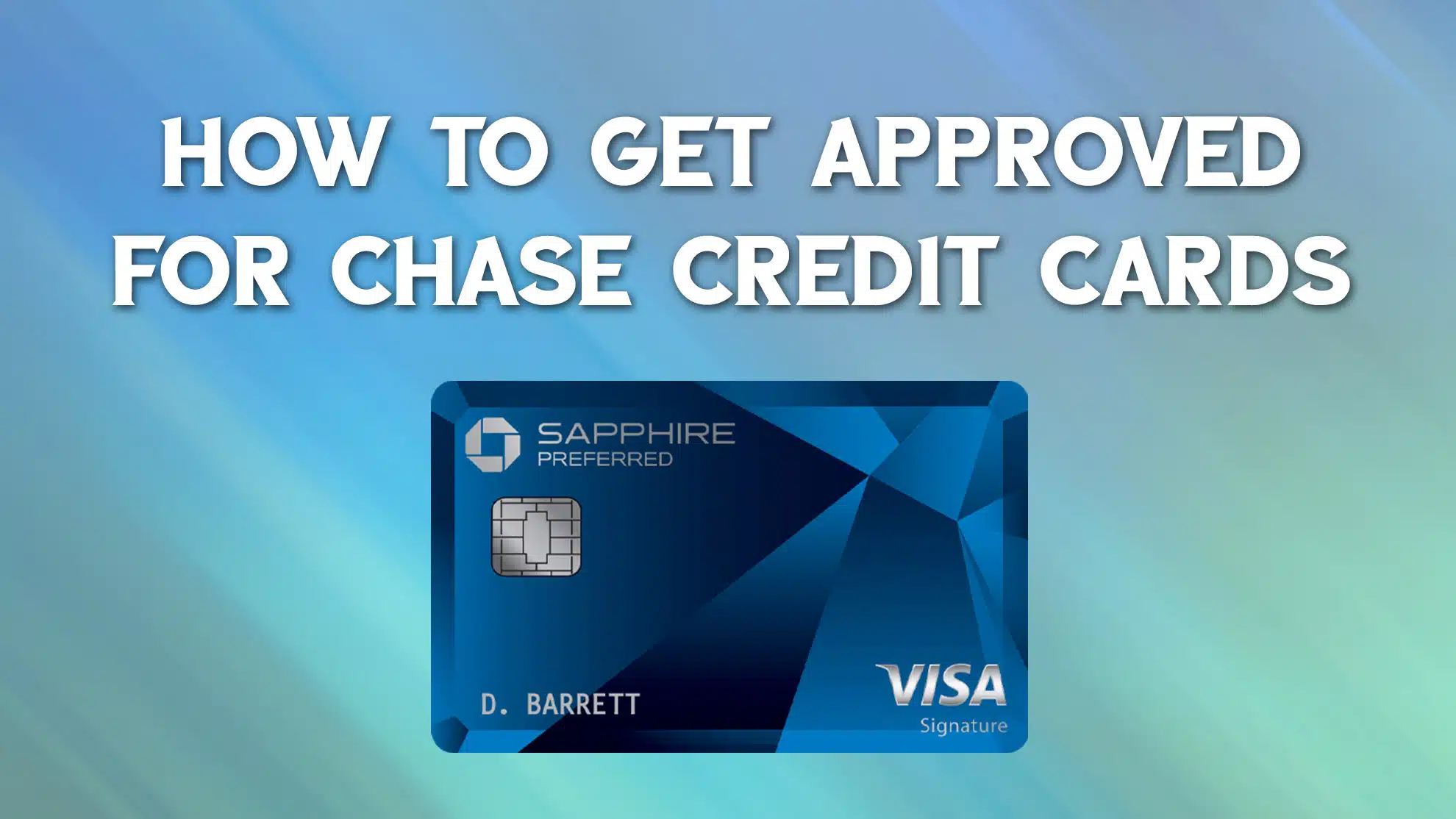
Learn How to Get Approved for Chase Credit Card Sapphire, Freedom Unlimited, and Freedom Flex with Application Approval Rules in 2022
Subscribe to Mark Reese’s Youtube Channel
[sc name=”googleinpostad”]
Chase credit cards are among consumers’ most recognizable and sought-after options. You may increase your chances of getting approved for a Chase credit card by following a few simple guidelines, regardless of whether you’re attempting to create ultimate privileges point trifecta for yourself or just looking to add some co-branded hotel and airline cards to your collection.
You’ve come to the right place if you’re thinking about adding more Chase credit cards to your wallet. Here are the rules for submitting a Chase application and many other helpful hints. It’s important to note that the minimum age for a Chase credit card is 18.
The legal drinking age varies by location; for example, in Alabama and Nebraska, it’s only 19, while in Puerto Rico, it’s 21. If the applicant is married, both spouses can register for an account.
An Overview of the Chase Credit Cards 5/24 Rule
The Chase 5/24 rule is where we’ll go into the specifics. Chase’s infamous “5/24 Rule” stipulates that your application will be immediately denied if you have established five or more credit cards with any bank in the last 24 months. This restriction is unpopular because it prevents many people from obtaining cards, at least for a time frame.
That’s a whole 2 years, and it’s obvious that this is Chase’s anti-D gaming policy designed to prevent people from collecting signup bonuses and canceling their cards soon afterward, turning them into very unprofitable clients.
The Chase Credit Cards 2/30 Rule
The 2/30 rule states that you can apply for and receive approval for two Chase credit cards in 30 days. While approval is possible, it is by no means assured; you should give it at least two or three months between Chase applications at the very least. The longer your standard wait time, the better your chances of acceptance. Let’s say you succeed in bringing them together.
One of these may be flagged as a preventative fraud assessment by Chase’s system, forcing you to deal with the reconsidering line. Even though we don’t have enough evidence to say whether this includes business cards and personal ones, we treat all cards equally.
How About A Guideline Instead Of an Approval Rule?
According to Chase’s “one 30” policy, you can only apply for and receive one business credit card from Chase every 30 days. Consequently, if you’re planning on applying for multiple credit cards at once, such as the IHD business card and the Chase Inc business cash card, you should give yourself at least two months between each application to avoid raising red flags with the issuers.
This will demonstrate to Chase that your motivations go beyond trying to game the bonus up nets, 24-month rule, and same card rule (all of which are technically different rules but will be discussed collectively here). According to these, you are not eligible for a new card and bonus if you already have an identical card open or have had the same card in the past 24 months and given a bonus to a card member.
The rule for Previous Chase Card holders
If you already have a card in that brand’s line open or opened a card in that family over the past 24 months and received a new card member bonus, you are not eligible for this particular card or its bonus. Remember that this does not include business cards from the same company. Here, we’ll demonstrate how to access that evaluation and provide a sample answer.
This stipulation will read as follows under the “offer specifics” section of the website. Current or former Southwest Rapid Rewards cardholders who have received a new card member bonus in the past 24 months will not be eligible to apply for this product. Members of the Southwest Rapid Rewards business card or the Southwest Rapid Rewards employee credit card are exempt from this policy.
Similar considerations apply to the IG card in our view. Here we have the identical situation with the IHG Premier, albeit with slightly different phrasing due to the inclusion of the statement “the pro is not accessible to existing cardmembers of any private IHG rewards card.” Therefore, the word “personal” is highlighted, and this
One Southwest Chase Credit Rule
Of course, that doesn’t work in the business world. For the sake of concision, we can refer to this as the single Southwest rule, the single IHD rule, or the single fill-in-the-blank rule. The wide quantity of Chase credit cards, each of which may be used to accrue different types of points (such as IHG points or Chase Ultimate Rewards points or, according to the Freedom Cards‘ high-points-rule-following, Southwest Rapid Rewards points), is something we feel obligated to point out.
The One Chase Sapphire Rule
In this section, we have laid out the 40-in-a-month rule and the Sapphire-only restriction. In other words, if you already have an active Sapphire card, you cannot open a new Sapphire branded card and receive a bonus. Additionally, a bonus on any previous Sapphire branded card for which you were a new card member during the last 48 months. Again, this regulation will be detailed in the offer’s accompanying link.
This window will appear on Chase Sapphire Preferred and Chase Sapphire Reserved. Your existing Chase credit card is the Chase Sapphire Preferred, but you have your eye on the more elite Chase Sapphire Reserved. To qualify for the Reserve card, you’ll need to either deactivate your Sapphire Preferred or downgrade to a Freedom brand card (such as the Freedom Flex or the Freedom Unlimited).
It’s important to wait at least 48 months, or four years, after canceling or downgrading your Sapphire card to ensure you don’t qualify for a bonus. Then you can apply for a card with the Sapphire brand and be considered for the bonus. And the converse is also true. You need to downgrade or cancel and let the clock run for 48 months to get rid of it.
How Many Cards Can You have?
Let’s talk about the maximum amount of Chase credit cards you can have and why it’s important to know this information. At this time, nobody knows how high it can go. Chase may place a cap on your available credit and specify that amount instead. It doesn’t matter if you have three Chase cards or nine if you’re approved for a total of $75,000 in credit based on your score, income, debt levels, etc. When pursuing, quantity is secondary to quality. Instead, they are concerned about your whole credit history (across all those graphs) concerning your income and other criteria (credit score requirements).
Chase may have different card restrictions and doesn’t publicize its store policies. However, when registering for cards, we need to have the appropriate credit scores: a 680 or higher for Chase branded cards with no annual fee, a 670 or higher for co-branded cards, a 700 or higher for Chase branded cards with annual fees, and a 700 or higher for a Chase branded business credit cards. Similarly, we frequently get asked about the simplest Chase credit card application process.
Credit Checks and Chase Card Approval
Let’s move on to voting for the credit. Even if you have an existing card connection with Chase, you should expect a thorough credit check whenever you apply for a new card. It’s natural to worry about a momentary impact on your credit score if a new inquiry appears on your report. However, it’s important to remember that this knock is usually temporary. It gradually fades away, and if you get accepted for that automobile, you’ll likely bounce back soon and maybe even move up to a higher retailer.
Opening a new line of credit and establishing a strong payment history is also beneficial for moving ahead. It’s not a big deal, but you should still be aware of it. If you’re planning on making a large purchase, like a house or car, and you want your credit score to be as high as possible, you may want to put off applying for new credit cards. Chase credit card applicants who are initially turned down should keep in mind that calling the reconsideration number may result in a reassessment of their application.
If you are curious about what Mark Reese does before applying for a Chase card, here are six steps to help you get a feel for his process. We normally do the following to increase our chances of being approved by Chase.
- Keep the balances on our Chase cards at their current low levels.
- Check the existing balances. It would help if you settled whatever debts you have with them.
- Select the desired card type. Examples of such distinctions include using a co-branded card vs. a Chase card, a personal card as opposed to a business card, and so on.
- Look into whether or not the card has been used previously. If you ever have any questions, you can always give Chase a ring.
- Verify that we are following the card’s additional rules.
- Considering that this is a universal regulation for all Chase cards, we took caution to keep our balances below $524.
Conclusion
There are advantages to becoming prequalified for a Chase credit card. Before making a hard inquiry on your credit report, you can determine if you’re eligible for a Chase credit card. Remember that even if you get preapproved, that doesn’t mean you’ll be issued the card. Are preapprovals worthwhile, then? Those who intend to apply for a card, regardless, have nothing to lose by doing so.
It’s important to keep in mind that you’ll need to submit a complete application before learning whether or not you’ve been accepted. This could result in a hard inquiry being recorded on your credit report for no reason.
I am not a financial advisor and This is NOT financial advice.
Please use any financial service at your own risk.
If you click on a partner link on this page, I may receive an affiliate commission compensation if you sign up for a service or product.

